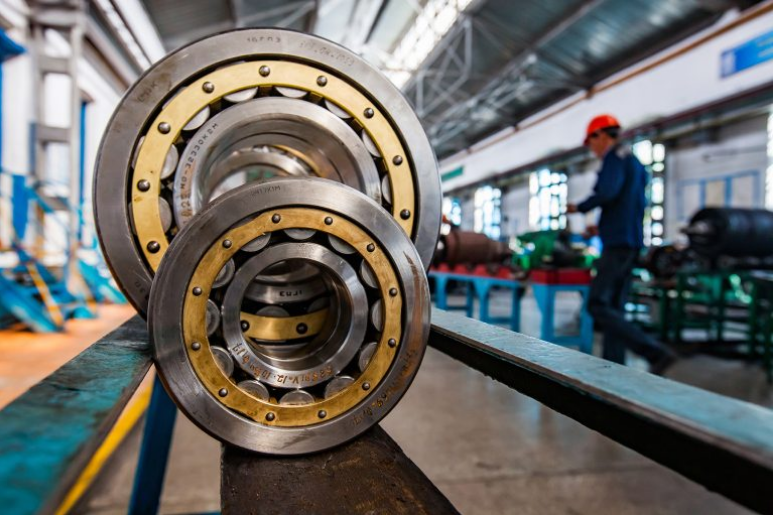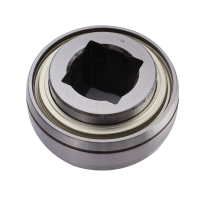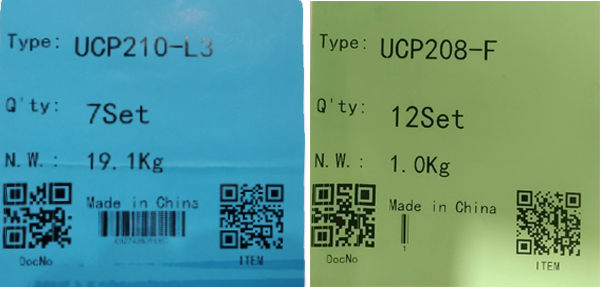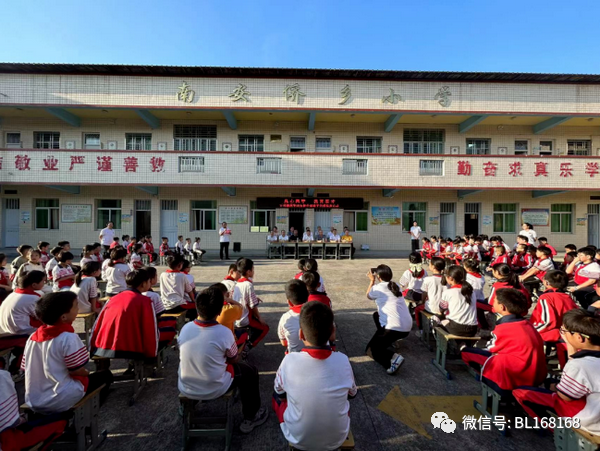
Over the years, there have been many situations in which there are safety concerns related to bearings, typically during installation and removal.
Mounting bearings safely
In the paper and mining industry, large diameter bearings are often used. The first step is to standing bearings on end as the wrapping is removed from them. This poses a risk of the bearing tipping, which can cause serious injury. The recommendation would be to ensure the bearing is slung, even if loosely, to an overhead crane so that if the bearing tips, it is caught by the sling.
Pressing bearings onto shaft – do not hit bearing with hammer
Bearing steel is hardened and has some degree of brittleness. A hammer blow can cause a shard of steel to fracture and fly, and act like shrapnel. The shard can cut through the material of the millwrights clothing, penetrating the skin.
Mechanically driving bearings up a tapered sleeve
Tapered bore bearings are mounted by driving the bearings up a tapered adapter sleeve. Force is required to drive the bearing up the sleeve. Often the nut is used to push the bearing up the sleeve. To do this, a spanner can be used. However, as the bearing size gets larger, the spanner needs to be impacted to turn the nut. This is done by either impacting a special wrench designed for impact or using a drift applied to the slots in the nut.
What often happens is that one millwright holds the drift and the other hits the drift with a sledge hammer. One false blow in a cramped area can cause an injury to the holder of the drift.
The use of a hydraulic nut to drive the bearing up the taper is a safer methodology; however, as with any use of high-pressure hydraulics, one must stand out of way of line of fire (i.e. in the line of travel if there were a hydraulic fitting failure).
Using heat to install bearings
No matter what method of heating is used, bearings are heated to about 100°C, which is about enough to cause a burn. Even if you are not injured, you may drop the bearing from the pain. Insulated/heat resistant gloves should always be used when handling bearings heated for installation.
The safest method to heat a bearing is with an induction heater, and a full featured induction heater will then stop heating at a set time or temperature. Induction heaters do create a magnetic field which may affect pacemakers or other electronic devices.
Using an oil bath has gone out of style as they are hazards in terms of vapours and storage of a hot fluid. As well, an oil coated bearing poses issues for safe lifting.
A torch/direct flame is not recommended for the health of the bearing, but there is also risk to humans as the flame is very hot and can create hot spots on the bearing, which, if the material structure is changed, can lead to bearing fracture generating a sharp surface.
Insertion of grease into the bearing
As grease is petrochemical, and it will have a number of reactive additives, it is important to wear gloves that provide a barrier to the potential chemical hazard from absorption through your skin.
As well, excessive grease, such as on an asset that get grease frequently, can cause slippery areas on the floor, where the grease (or lubricating oil) drops. Certainly, this is a housekeeping issue, however, it is related to the bearing.
Removal of bearings
When it comes to get a bearing off the shaft, sometimes the fastest way to get the bearings off the shaft is to cut it off. Sometimes, a disk cutter (zip cutter) is used, and other times, a torch or an arc welding device. With these methods, there is always the risk of starting a fire and many facilities require a hot work permit to undertake such a thing. Needless to say, when undertaking a bearing removal using such tools, there is always a danger of fire.
A less obvious danger is then when cutting a bearing switch viton seals, the elevated temperature could cause the release of toxic fumes. Furthermore, any residual grease or oil poses a danger in terms of toxic fumes. Not to mention that material from the process may be mixed into the grease. As an example, sulfur pellets can get missed into grease of a failed bearing from a sulfur conveyor.
Seals made of FKM (fluoro rubber) exposed to an open flame or temperatures above 300°C are a health and environmental hazard. They remain dangerous even after they are cooled. This also applies to PTFE seals. If exposed to temperatures above 300°C, such as fire or the open flame of a cutting torch, they give off hazardous fumes. Once the seals have been heated to such a temperature, they are dangerous to handle, even after they have cooled. They should never come into contact with skin.
As noted above, bearing steel is hardened and will fracture. The fracture surfaces can be razor sharp and they pose a danger when handling. Appropriate cut proof gloves should be worn when removing/handling severely damaged bearings.
There are some applications in which very large bearings and housings are used. As an example, there is a steel-making application in which there is a bearing with a 42” shaft diameter. The housings and bearing weigh a few thousand pounds. A number of years ago, there was an incident when the housing was being removed. The housing mass was being supported by a Hiab crane truck. They were trying to push the housing using a hydraulic jack, but it was stuck. The Hiab operator used the crane to add some pull. However, the housing became unstuck and violently swung and crushed the operator of the Hiab against his truck.
Although this story is an exception, it still illustrates that when handling bearings, the correct tools should be used for every step of the process. A well-planned job with the right tools is always faster and safer for the technicians doing the job.
Douglas Martin is a heavy-duty machinery engineer based in Vancouver. He specializes in the design of rotating equipment, failure analysis, and lubrication.
(https://www.mromagazine.com)
More About FK:
FK Bearing Group Co.,Ltd. was orignally founded in 1969 and always focuses on Bearing Units in the past 50 years. FK has complete industrial chain automatic factory of its own, now FK is one of the biggest bearing parts factories in China with annal production and sales up to 18 million pieces.
2022 New Week Hot Products Recommended:
An air handler, or air handling unit (often abbreviated to AHU), is a device used to regulate and circulate air as part of a heating, ventilating, and air-conditioning (HVAC) system. In Fanke, Air Handling Bearing Units include many types. FK Group warmly welcome you to buy top quality air handling bearing units.
https://www.fk-bearing.com/products/Air-Handling-Bearing-Units/870.html

More Products please do not hesitate to view here:
https://www.fk-bearing.com/products/catalogue.html
For dimensions and specifications, contact us now.
TEL: 86-595-86396027
FAX: 86-595-86382510
E-mail: export@fk-bearing.com
Website: www.fk-bearing.com
Mobile: m.fk-bearing.com



 Béarla
Béarla Spainnis
Spainnis Fraincis
Fraincis Gearmáinis
Gearmáinis An Phortaingéil
An Phortaingéil An Iodáil
An Iodáil Cóiréis
Cóiréis Seapánach
Seapánach Vítneaimis
Vítneaimis Tuircis
Tuircis Araibis
Araibis Rúisis
Rúisis Seiceach
Seiceach Téalainnis
Téalainnis Gaeilge
Gaeilge Bulgáiris
Bulgáiris An Pholainn
An Pholainn Cróitis
Cróitis Úcráinis
Úcráinis Boisnis
Boisnis Liotuáinis
Liotuáinis Laitvis
Laitvis Rómáinis
Rómáinis Gréigis
Gréigis Danmhairgis
Danmhairgis An Ungáir
An Ungáir Ioruais
Ioruais Fionlainnis
Fionlainnis Ollainnis
Ollainnis Sualainnis
Sualainnis An tSlóvaic
An tSlóvaic Slóivéinis
Slóivéinis Indinéisis
Indinéisis Beangáilis
Beangáilis Seirbis
Seirbis Úisbéicis
Úisbéicis




